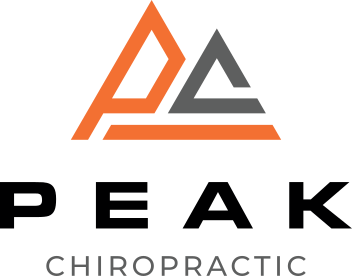If you're struggling with sciatica, you might be wondering how chiropractic care can help alleviate your discomfort. By focusing on spinal adjustments, therapeutic exercises, and lifestyle changes, chiropractors can create a thorough approach tailored to your specific needs. These techniques not only aim to relieve pain but also address underlying issues contributing to your symptoms. As you explore these methods, you may find surprising insights about your posture and daily habits that could enhance your recovery. Discovering these connections could be key to achieving lasting relief.
Understanding Sciatica
Sciatica is more than just a buzzword; it refers to the pain that travels along the sciatic nerve, which runs from your lower back down through your hips and legs. When you experience sciatica, you're likely feeling discomfort that can vary in intensity, from a mild ache to sharp, debilitating pain. This condition often arises due to issues like a herniated disc, spinal stenosis, or muscle tightness pressing on the nerve.
You might notice that the pain radiates down one side of your body, making everyday activities like sitting, standing, or walking challenging. It's common to feel sensations like tingling or numbness in your legs and feet, which can be just as annoying as the pain itself. Understanding the underlying causes of sciatica is vital for finding effective relief.
Many people don't realize that certain lifestyle factors can contribute to sciatica. For instance, poor posture, prolonged sitting, and a lack of regular exercise can all increase your risk. If you've been experiencing sciatica, it's important to pay attention to your body and recognize what triggers your symptoms. This knowledge can empower you to make proactive changes in your routine.
Recognizing the signs and understanding the nature of your discomfort can lead you to the right treatments. By being informed, you can work towards alleviating your symptoms and regaining control over your life. Addressing sciatica not only improves your physical well-being but also enhances your overall quality of life.
Chiropractic Techniques Overview
Chiropractic care offers a variety of techniques aimed at relieving sciatica pain and addressing its underlying causes. These techniques focus on improving spinal function, enhancing mobility, and reducing nerve irritation.
One common approach is soft tissue therapy, where your chiropractor applies pressure to tight muscles and fascia. This helps release tension and improve blood flow, which can alleviate pain.
Another technique you might encounter is therapeutic exercises. Your chiropractor may guide you through specific stretches and strengthening exercises tailored to your condition. These exercises not only help relieve pain but also build support around your spine, preventing future issues.
You may also experience myofascial release, which targets the fascia—the connective tissue surrounding muscles. By applying gentle sustained pressure, your chiropractor can help release restrictions and improve mobility in the affected areas.
In addition, you might benefit from electrical stimulation treatments. This technique uses low-voltage electrical currents to stimulate nerves and reduce pain. It can also promote healing by increasing circulation to the affected area.
Lastly, your chiropractor may recommend lifestyle modifications, including ergonomic adjustments and posture corrections, to help you maintain a healthier spine and minimize sciatica flare-ups.
Spinal Adjustments
A spinal adjustment can be a key component in relieving sciatica pain. By aligning your spine properly, these adjustments can reduce pressure on the sciatic nerve, helping alleviate discomfort and improve mobility. When you visit a chiropractor, you can expect them to use various techniques tailored to your specific needs.
Here's what you can typically expect from spinal adjustments:
- Assessment: Your chiropractor will evaluate your posture, range of motion, and any areas of tenderness. This helps identify misalignments contributing to your sciatica.
- Adjustments: Using precise techniques, the chiropractor will apply controlled force to specific vertebrae. This can help restore normal alignment and function, which may reduce nerve irritation.
- Follow-up: After adjustments, your chiropractor may recommend a plan for follow-up visits. Regular adjustments can enhance the benefits, ensuring your spine remains in alignment and reducing the likelihood of sciatica flare-ups.
Spinal adjustments can't only alleviate your pain but also enhance your overall spinal health. Many patients report feeling immediate relief after their first session, along with improved mobility and reduced tension.
However, it's crucial to work closely with your chiropractor to monitor progress and make any necessary adjustments to your treatment plan. Remember, ongoing communication is imperative for achieving the best results in your journey toward sciatica relief.
Therapeutic Exercises
After spinal adjustments help align your spine and reduce pressure on the sciatic nerve, incorporating therapeutic exercises can further enhance your recovery. These exercises are essential in strengthening the muscles around your spine and pelvis, improving flexibility, and promoting overall spinal health.
Start with gentle stretches to alleviate tension in your lower back and legs. Simple hamstring stretches can be beneficial. Sit on the floor with one leg extended and the other bent, reaching toward the toes of the extended leg. Hold this position for 15-30 seconds, and then switch legs. Repeat a few times daily.
Next, consider strengthening exercises like bridges. Lie on your back with your knees bent and feet flat on the floor. Gradually lift your hips off the ground, squeezing your glutes at the top. Hold for a few seconds before lowering back down. Aim for 10-15 repetitions.
Additionally, core strengthening exercises, such as planks, can help support your spine. Start on your hands and knees, then extend your legs back, maintaining a straight line from head to heels. Hold this position for 20-30 seconds, focusing on engaging your core muscles.
Lifestyle and Posture Recommendations
Maintaining proper posture and making lifestyle adjustments are vital for managing sciatica and enhancing your recovery. By focusing on your daily habits and how you carry your body, you can markedly reduce pain and improve your overall well-being. Here are some key recommendations to incorporate into your routine:
- Practice Good Posture: When sitting, verify your back is straight, shoulders relaxed, and feet flat on the ground. Use a chair that supports your lumbar region, and avoid slouching or leaning forward.
- Stay Active: Regular physical activity is essential. Aim to incorporate low-impact exercises like walking, swimming, or cycling into your routine. These activities strengthen your core and lower back muscles, which can alleviate pressure on the sciatic nerve.
- Mind Your Lifting Technique: Always bend at the knees and keep your back straight when lifting heavy objects. This technique prevents unnecessary strain on your back and reduces the risk of aggravating your sciatica.
In addition to these tips, be mindful of your sleep position. Opt for a supportive mattress and consider sleeping on your side with a pillow between your knees to maintain spinal alignment.
Conclusion
To sum up, effective chiropractic approaches can greatly relieve your sciatica symptoms. By focusing on spinal adjustments, tailored exercises, and lifestyle modifications, you can enhance your overall spinal health and mobility. Remember to pay attention to your posture and incorporate ergonomic changes into your daily routine. With the right combination of techniques and consistent effort, you'll be on your way to long-term relief and a more active, pain-free life. Don't hesitate to consult your chiropractor for personalized guidance.



